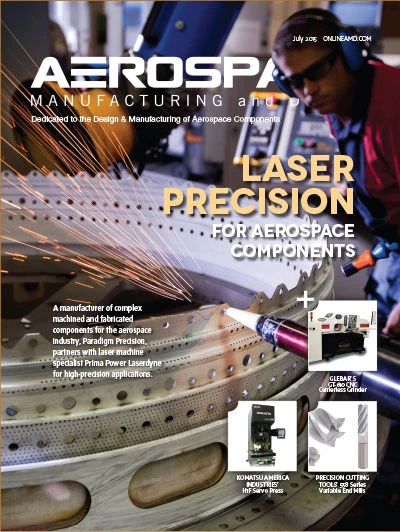The 51st edition of the International Paris Air Show in June featured mostly familiar aircraft, but some seen before only as test articles are now ready for customer delivery.
Boeing had on display a China Airlines 777-300ER with an award-winning passenger interior viewable via smart phone app. A 787-9 Dreamliner in Vietnam Airlines colors wowed the crowds with a dramatic near-vertical take-off during the daily air show. Boeing officials announced orders or firm commitments for 331 aircraft, valued at $50.2 billion, including an order from global leasor AerCap for 100 737-MAX 8s. More than 100 additional 737s were part of the total, sales coming mainly from Asia/Pacific-based airlines and leasors. Russian logistics company Volga-Dnepr Group signed a memorandum of understanding for 20 747-8 freighters, list-price $7.4 billion.

Airbus won $57 billion worth of business for a total of 421 aircraft at this year’s show. The deals comprise firm orders for 124 aircraft worth $16.3 billion and commitments for 297 aircraft worth $40.7 billion. In the widebody offerings, the A350 XWB garnered 31 orders for the A350-900 variant, and A330 types tallied 24 orders or commitments. The Airbus A320 family of single-aisle jetliners added 103 firm orders and 263 commitments – 323 of them with the new engine option. An A350 XWB prototype, a double-deck A380, an A400M military turboprop, and the electrric-engined E-Fan technology demonstrator performed in aerial displays.
Airbus Helicopters debuted full-scale, representative models of the new H160 and H145M civilian helicopters, plus the H225M military helicopter. A French Army Aviation NH90 TTH Caïman, from Airbus, AgustaWestland, and Fokker joint-venture NHIndustries performed flight demonstrations.
Bombardier’s family of commercial aircraft included the Q400 NextGen turboprop, while the CS300 regional jetliner was featured in flight displays.
French aircraft producer Dassault was represented by its Rafale military aircraft and its Falcon business jets.
In the trade show halls, talk focused on how manufacturers can meet the ramp-ups in aircraft and jet engine production. Solutions included automation, multi-axis machining, and special tooling for cutting harder alloys and composites more efficiently.
The U.S. Pavilion promoted the theme of “Ask America First” to help heighten interest in American equipment, product and service suppliers, and regions with the nearly 150,000 business professionals who attended the show – a 7.6% increase from 2013.
New materials were another theme of the show. Aleris revealed an aluminum-magnesium-scandium alloy sheet for up to 4% weight savings. Alcoa’s booth included a range of products forged from titanium, Inconel, and metals besides aluminum. Additive manufacturing continues to gain attention, with companies such as Stratasys, BeAM, and ATI featuring new applications or materials.
Dassault Systèmes launched its Passenger Experience, featuring high-end 3D visualization technology and interactive content to transform engineering data into visual 3D design, marketing, and sales applications.
A growing focus for the show was harnessing the power of the information age, with companies such as Rockwell Collins, Honeywell, and Thales promoting the secure flow of information within and between aircraft, ground, and back office, plus in-flight entertainment and connectivity. Manufacturing’s need to keep pace with the supply chain via the Internet of Things was a talking point for software solution providers such as PTC, which supplied the vantage point for the aerial views shown here.

About the author: Eric Brothers, senior editor of Aerospace Manufacturing and Design, can be reached at ebrothers@gie.net or 216.393.0228.
Get curated news on YOUR industry.
Enter your email to receive our newsletters.
Explore the July 2015 Issue
Check out more from this issue and find your next story to read.
Latest from Aerospace Manufacturing and Design
- America Makes announces IMPACT 3.0 Project Call worth $4.5M
- Updated parting and grooving geometries from Sandvik Coromant
- AIX showcases the future of air travel
- Sunnen Products' PGE-6000 gage
- #41 Lunch + Learn Podcast - SMW Autoblok
- Revolutionizing aircraft design without sacrificing sustainability
- GE Aerospace awarded subcontract for FLRAA next phase
- KYOCERA Precision Tools publishes 2025-2026 Indexable Cutting Tools Catalog








